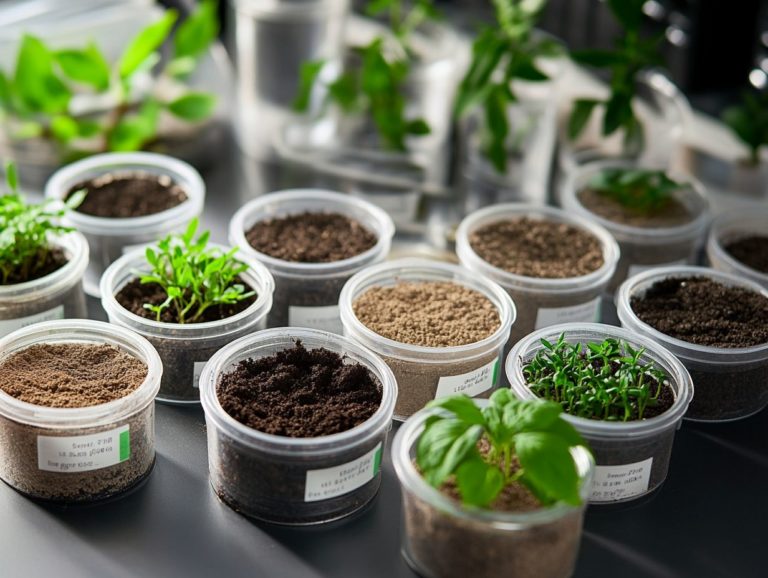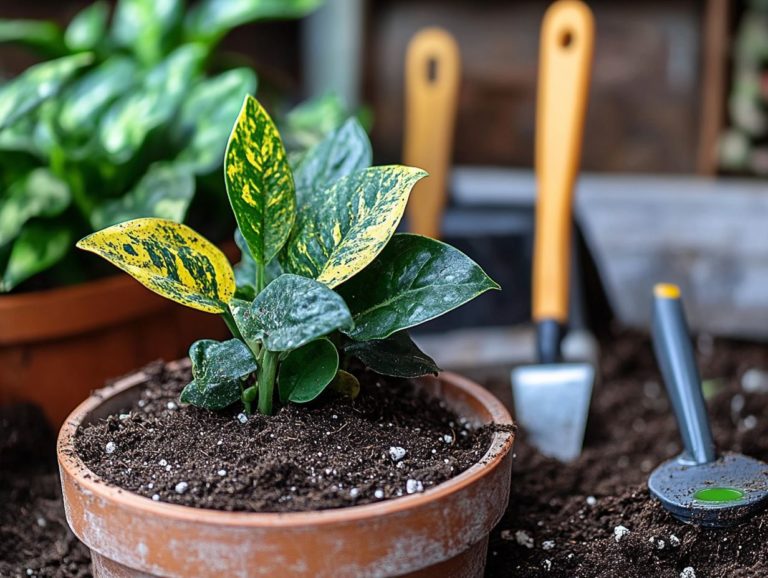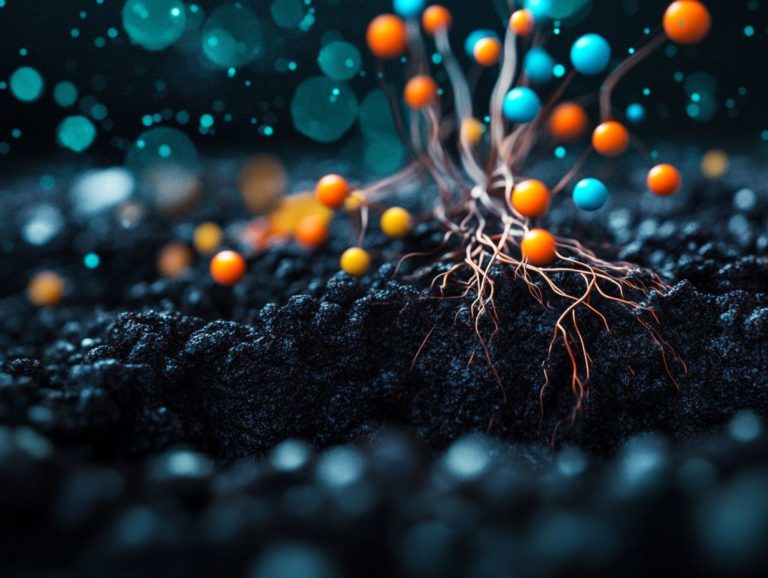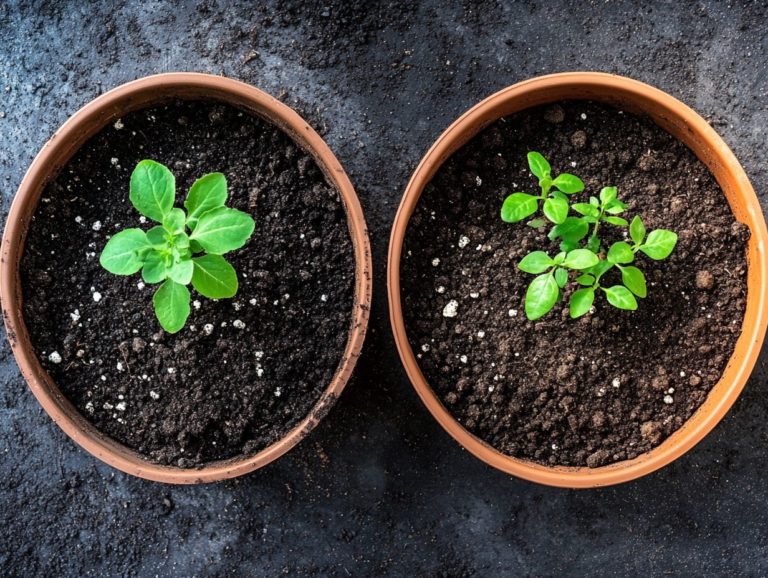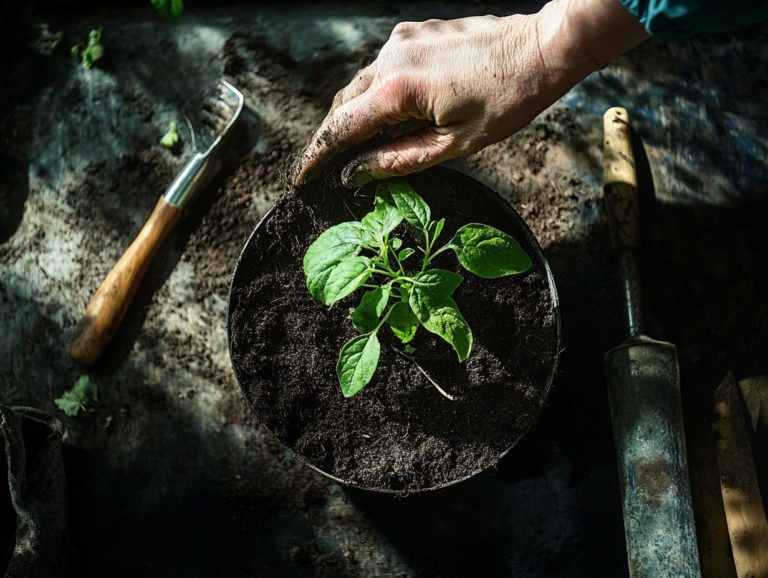How to Avoid Soil Compaction in Potted Plants
Soil compaction can be a subtle adversary for your potted plants, quietly stifling growth and draining their vitality. Understanding the causes of this issue is crucial for maintaining the health of your green companions.
This article delves into the signs of compacted soil, from wilting leaves to lackluster drainage. You’ll also discover effective strategies for prevention and methods to rejuvenate affected soil, along with alternative gardening techniques that foster robust growth.
Dive in and discover how to cultivate thriving potted plants!
Contents
- Key Takeaways:
- Understanding Soil Compaction in Potted Plants
- Signs of Soil Compaction
- Preventing Soil Compaction
- Reviving Compacted Soil
- Alternative Gardening Methods to Avoid Soil Compaction
- Frequently Asked Questions
- What causes soil compaction in potted plants?
- How can I prevent soil compaction in my potted plants?
- Can I use regular garden soil for my potted plants?
- Do different types of plants require different methods to avoid soil compaction?
- What are the signs of soil compaction in potted plants?
- How can I fix soil compaction in my potted plants?
Key Takeaways:
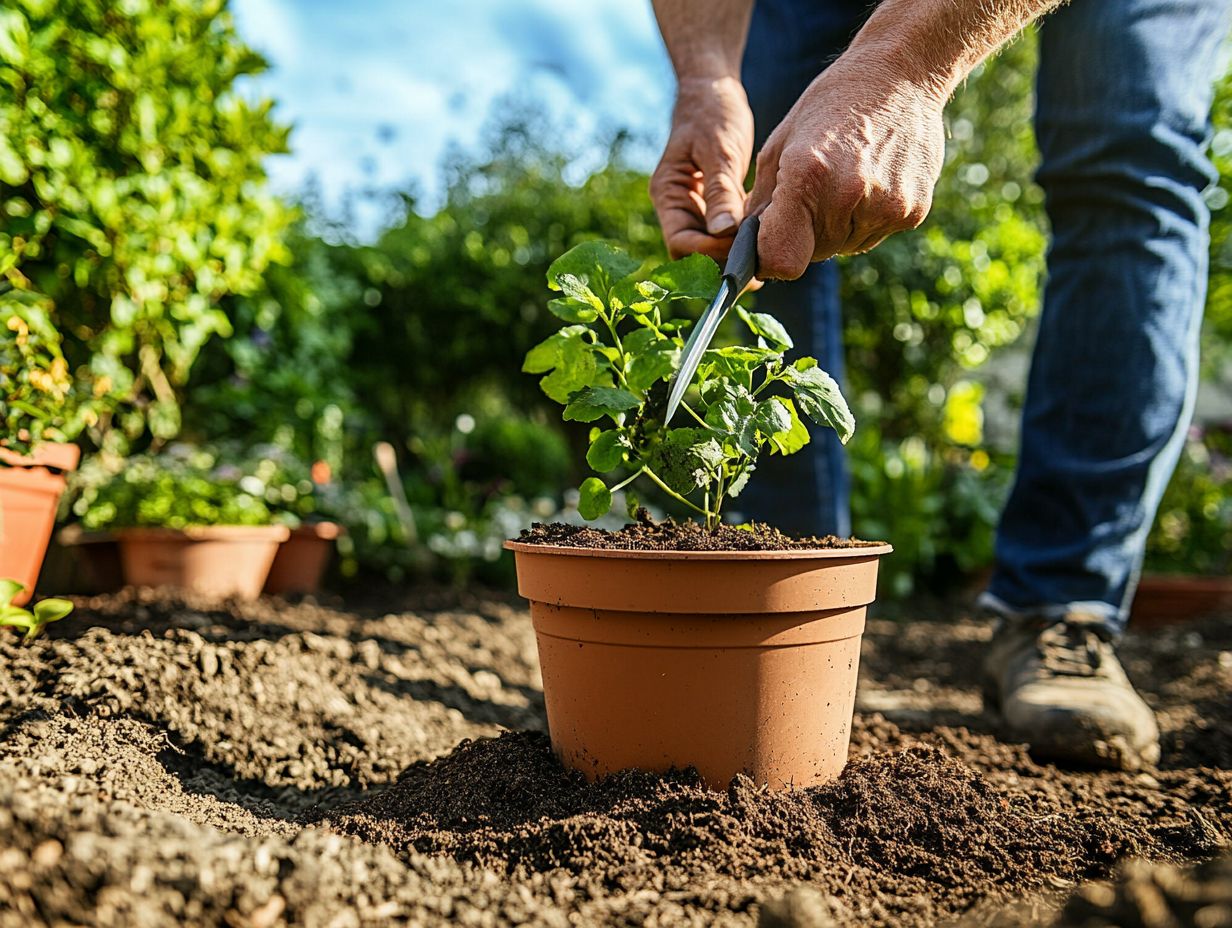
- Proper watering techniques and using the right soil and container can prevent soil compaction in potted plants.
- Identifying and addressing symptoms of soil compaction is crucial for maintaining healthy plants.
- Alternative gardening methods, such as raised beds or vertical gardening, can help avoid soil compaction in potted plants.
Understanding Soil Compaction in Potted Plants
Understanding soil compaction in potted plants is crucial for achieving optimal plant health and growth. Compacted soil can really hold your plants back by hindering essential processes that support root development and nutrient absorption.
You might encounter compaction issues stemming from factors like repeated watering, heavy planting mediums, and insufficient soil aeration. These can adversely affect microbial activity the activity of tiny organisms in the soil that help plants grow and the overall vitality of your plants.
To deepen your understanding, we will explore various aspects of soil compaction, including its causes, signs, and prevention techniques. This knowledge will enhance your practices in container gardening.
What Causes Soil Compaction?
Soil compaction in your potted plants can stem from several factors, such as the type of growing medium, improper watering habits, and insufficient drainage holes that hinder proper aeration.
When the substrate ratio is off-balance, it can create overly dense soil, restricting root growth and hampering your plant’s ability to absorb essential nutrients and water. This can worsen if you’re drowning your plants or letting them dry out too much, as both create an environment that invites further compaction.
The materials you select for your potting mix are also crucial. Using heavy, compact substances can lead to clay-like conditions that stifle the air pockets necessary for healthy plant development. All these factors combined can significantly jeopardize the overall health of your potted plants.
Signs of Soil Compaction
Identifying the signs of soil compaction is essential for nurturing healthy plants. Compacted soil can really hold your plants back, disrupting nutrient absorption and diminishing water retention, ultimately leading to a decline in plant vitality.
By recognizing these signs early, you can take action to restore the soil’s integrity and support robust plant health.
Identifying and Addressing Symptoms
Identifying and addressing the symptoms of soil compaction requires keen observation of plant health. Look for signs of nutrient deficiency, poor water absorption, and impaired root structures that might call for techniques like root pruning.
Recognizing these symptoms early is essential for implementing effective remedies, as your plants’ health is closely linked to their ability to thrive in compacted soil. Monitoring water levels is crucial; insufficient moisture can stunt growth, while too much can lead to root rot. Compacted soil often locks nutrients away, making them less accessible to the roots.
Practices such as root pruning not only encourage new growth but also help alleviate some effects of compaction by allowing the plant to explore less compacted areas. By regularly checking these factors, you can maintain a balanced ecosystem that fosters optimal plant health.
Start checking your potted plants today and see how they thrive!
Preventing Soil Compaction
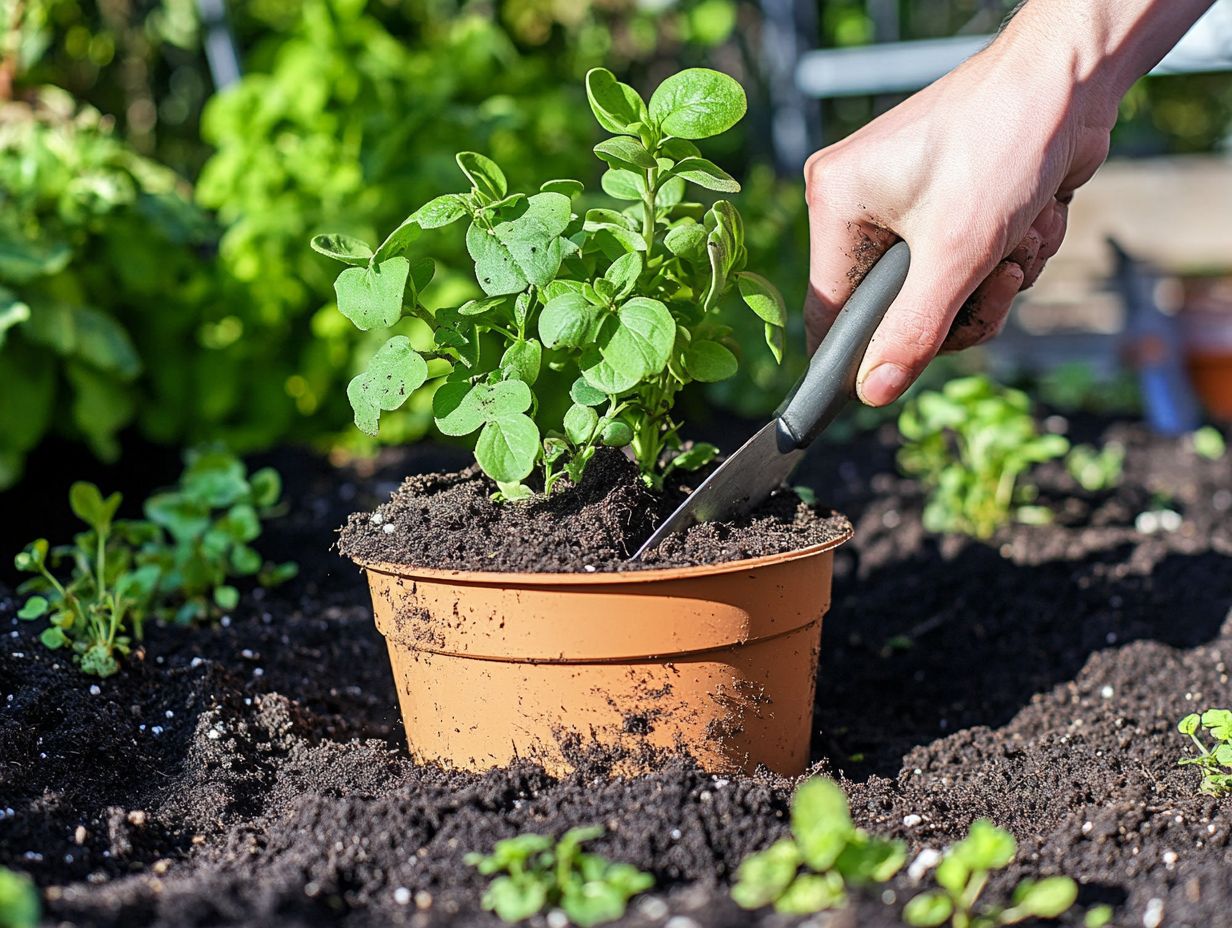
Preventing soil compaction is crucial for fostering healthy root growth and ensuring your plants flourish. You can achieve this by employing proper watering techniques, choosing the right growing medium, and opting for fabric pots that enhance aeration.
Each of these strategies contributes significantly to creating an optimal environment for your plants to thrive.
Proper Watering Techniques
Implementing proper watering techniques is essential for maintaining soil aeration and preventing compaction. Overwatering can lead to a lack of oxygen, which ultimately hinders root growth.
Timing and frequency are key in this process. By watering early in the morning, you maximize absorption and minimize evaporation, allowing moisture to penetrate the soil effectively.
On the flip side, irregular watering can create retention issues, where excess moisture suffocates the roots and fosters disease.
Opting for deep, infrequent watering encourages strong root development while ensuring optimal aeration.
By finding that perfect balance, you can support the soil’s structure, fostering healthy plant growth and enhancing the vitality of your garden.
Choosing the Right Soil and Container
Choosing the right soil and container? It s a game-changer! A well-balanced potting mix paired with fabric pots that have drainage holes can significantly enhance your plants’ health and growth.
When you select the ideal potting mix, it’s vital to consider the specific needs of the plants you re nurturing, including their moisture and nutrient requirements.
Incorporating organic matter, like compost, improves soil structure and provides essential nutrients, fostering a robust root system.
Your choice of containers should balance aesthetics and functionality. Opt for pots with adequate drainage holes to allow excess water to escape, reducing the risk of root rot while promoting aeration.
These elements work together to create an optimal environment, ensuring vibrant growth and longevity for a variety of plants.
Reviving Compacted Soil
Reviving compacted soil is crucial for restoring root growth and enhancing nutrient exchange. You have a variety of effective methods at your disposal to loosen the soil, such as utilizing aerated compost tea (a nutrient-rich liquid made by soaking compost in water) and incorporating various soil amendments.
Each approach contributes to creating a more favorable environment for your plants, promoting their overall health and vitality.
Methods for Loosening Soil
Methods for loosening soil are essential for revitalizing compacted mediums. Incorporating materials like perlite and compost can significantly enhance soil aeration and promote robust root growth.
Along with these natural amendments, consider utilizing mechanical aeration techniques, such as core aerators or lawn spikes. These tools effectively break up dense soil layers, allowing air and nutrients to penetrate more deeply.
By carefully mixing perlite into your topsoil, you create a lighter texture that encourages drainage and prevents any risk of root suffocation.
Compost not only enriches your soil but also improves its structure, fostering a vibrant ecosystem that supports beneficial microorganisms.
Implementing these practices is vital for cultivating a healthy garden, as they lead to stronger plants that can truly thrive in their environment.
Alternative Gardening Methods to Avoid Soil Compaction
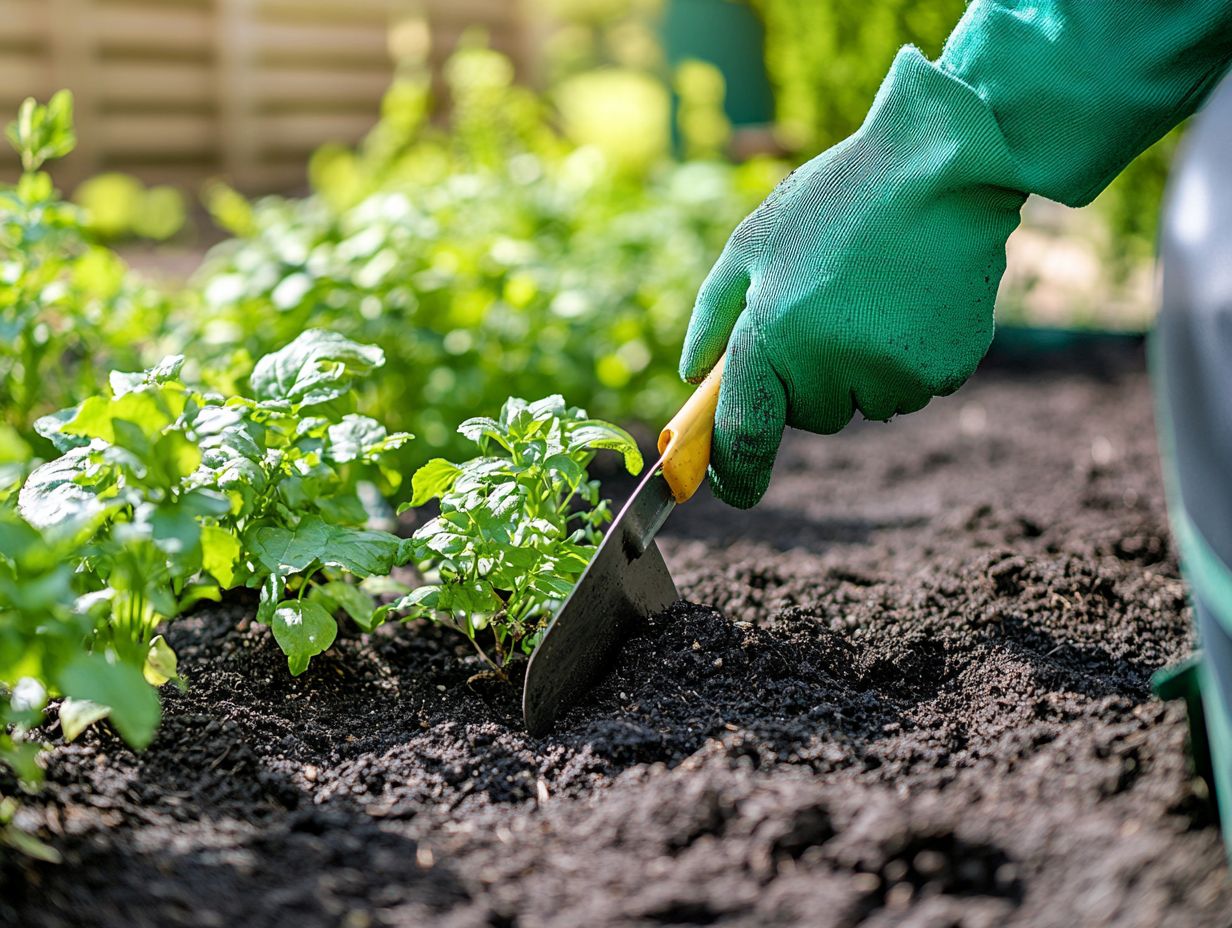
Exploring alternative gardening methods allows you to discover innovative solutions that can effectively prevent soil compaction. Embracing techniques like raised beds and vertical gardening not only enhances soil aeration but also fosters healthier plant growth.
Transform your gardening experience into something truly rewarding. Don t wait! Try these methods today for a thriving garden!
Exploring Different Planting Techniques
Exploring various planting techniques can uncover effective strategies for enhancing soil conditions. By utilizing fabric pots alongside rich organic matter and compost, you can significantly improve air in the soil and prevent compaction.
Incorporating these methods not only creates a healthier environment for your plants but also promotes sustainable practices. Fabric pots are particularly advantageous as they allow excess moisture to evaporate while encouraging root systems to expand freely. This helps steer clear of the dreaded pot-bound scenario.
When you pair these pots with compost, which enriches the soil with essential nutrients, and organic matter like shredded leaves or grass clippings, you cultivate a vibrant ecosystem that supports robust plant growth. This perfect blend keeps your plants thriving with water and nutrients!
This thoughtful combination fosters better water retention and nutrient absorption, ultimately leading to thriving gardens and bountiful harvests.
Utilizing Raised Beds or Vertical Gardening
Utilizing raised beds or vertical gardening techniques presents you with a wealth of advantages, including improved soil aeration, better drainage, and significantly reduced risks of soil compaction. These methods are ideal for those passionate about container gardening.
These innovative approaches alleviate the challenges posed by compacted soils that can stifle plant root development. They also cultivate an optimal environment for flourishing growth. With raised beds, you can customize your soil mix, incorporating organic matter that retains moisture and provides those essential nutrients.
Vertical gardening enhances airflow around your plants, minimizing the chances of root rot and nurturing a vibrant ecosystem. By elevating your plants in fabric pots, you gain greater control over water runoff, ensuring that drainage holes effectively channel excess moisture away. This promotes healthy, robust vegetation, turning your gardening endeavors into a thriving success.
Watch this video for more tips on effective planting techniques!
Frequently Asked Questions
What causes soil compaction in potted plants?
Soil compaction in potted plants is usually caused by overwatering, using heavy or compacted soil, or constantly moving the pot from one location to another. It can lead to compaction problems that hinder root growth.
How can I prevent soil compaction in my potted plants?
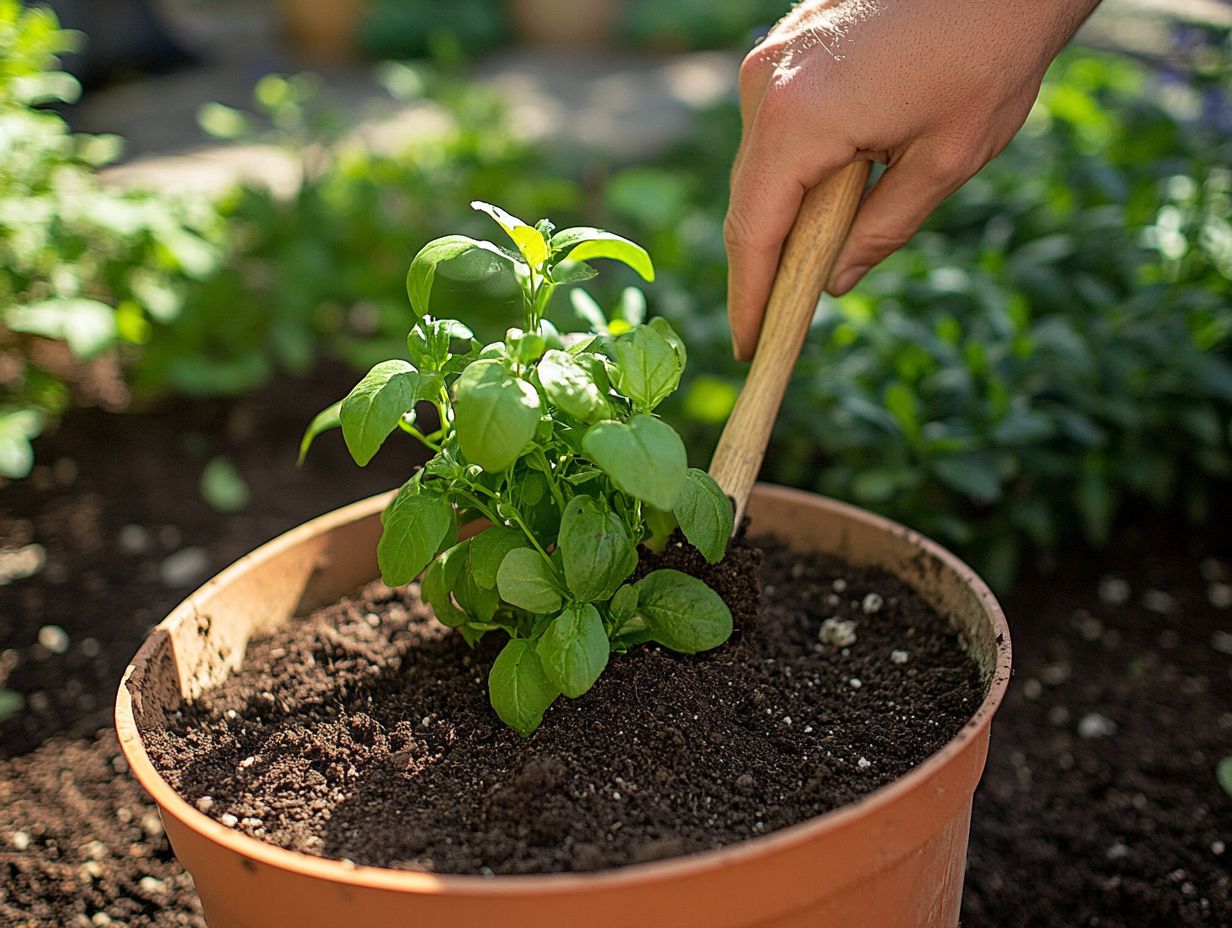
To avoid soil compaction, make sure to use loose and well-draining soil with a good mix that helps drain water well. Water your plants only when the top inch of soil is dry, and avoid frequently moving the pot.
Can I use regular garden soil for my potted plants?
No, regular garden soil is not suitable for potted plants as it tends to be heavier and more compact, leading to soil compaction. Use potting mix specifically designed for potted plants that includes components like pine bark and compost.
Do different types of plants require different methods to avoid soil compaction?
Yes, some plants, such as succulents, prefer well-draining soil enriched with microorganisms and fertilizers. They should not be overwatered to prevent soil compaction. On the other hand, some plants, like ferns, need consistently moist soil to thrive.
What are the signs of soil compaction in potted plants?
Signs of soil compaction in potted plants include slow growth, yellowing leaves, wilting, and water pooling on the surface of the soil. These can be indicators of poor nutrient exchange and microbial activity.
How can I fix soil compaction in my potted plants?
If your potted plant is showing signs of soil compaction, you can gently loosen the top layer of soil with a fork or chopstick. You can also root prune and repot the plant with fresh, well-draining soil to prevent future compaction.
Start your gardening adventure today and watch your plants thrive!

